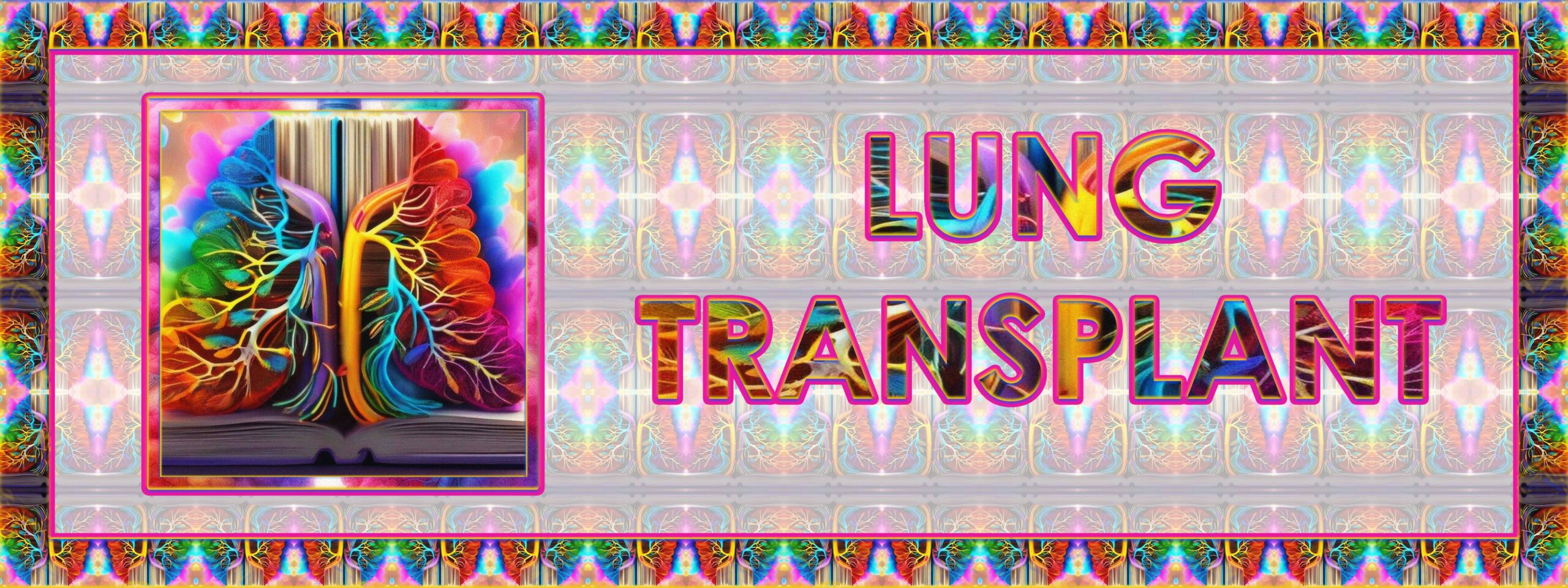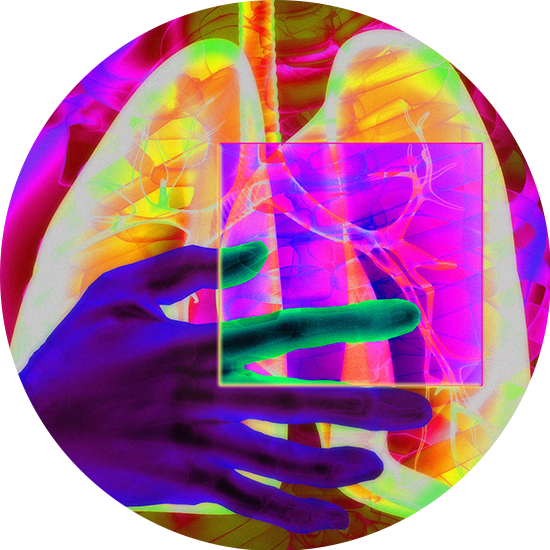
Lung Transplantation
René Hakkenberg
At some point, many Idiopathic Pulmonary Fibrosis (IPF) patients will consider getting a lung transplant. As we all know, there are currently no therapies to cure pulmonary fibrosis, and the medications presently available can at best, halt or slow the progression of the disease. They do not reverse fibrosis. But imagine if we could have a new set of lungs. Imagine a chance to start over and be free from this dreadful disease, from the constant shortness of breath (SOB), to be able to breathe again and ready to conquer the world again? The very idea sounds too wonderful to be true.
My name is René and in late 2017, when I was 75 years old, I was diagnosed with mild IPF. Over the next three years my condition continued to worsen, especially my shortness of breath. So, I decided to explore the option of getting a lung transplant. I contacted four well-known lung transplant centers and as requested, sent each of them my personal medical records including medications, surgeries, CT scans, and any other pertinent medical information. Once each confirmed receipt of my medical records, interviews were scheduled.
With each center I had at least a one-hour Zoom interview with the surgical team and/or the actual thoracic surgeon, during which we discussed the pros and cons of the surgery. In all four interviews, it became clear that my relatively advanced age could be a limiting factor – and for that reason, two of them rejected me. Decision-makers at one center recommended against the transplant but were willing to proceed with the evaluation. Only one out of the four centers invited me to the complete their evaluation.
Several factors eventually made me decide against proceeding with the transplant. These included a higher mortality rate (age is the most significant risk factor for lung transplant survival), a more difficult and lengthy recovery, and the knowledge that my immune system would be suppressed by the anti-rejection drugs. This, in turn, would increase the risk of recurring skin cancer and/or other types of lung diseases. Another factor that weighed in my decision not to proceed was that my home is in the Dutch Caribbean Island of Bonaire, and I would have been required to travel from there to the US hospital many times. All in all, a lung transplant just did not seem like a viable option for me. But for you, it might be a completely different story – so please keep reading.
Your IPF Diagnosis
Idiopathic pulmonary fibrosis is a long-term disease in which scars develop on the lungs. This causes lung tissue to thicken, become stiff, and lose the elasticity of healthy lung tissue, which makes it hard for the patient to breathe. In fact, one of the first warning signs for someone with IPF is shortness of breath (SOB).
Initially, shortness of breath may be attributed to being out of shape, overweight, or simply getting older. Those who are physically fit may notice excessive SOB after exercising strenuously and may assume they have pushed themselves too hard. But over time, if we notice that the SOB has gotten worse, and walking up a staircase or up hilly terrain becomes difficult or impossible without stopping to rest, we instinctively know that something serious is going on and can no longer ignore the symptoms or chalk it up to “getting old.” We eventually visit our family doctor, are referred to a pulmonologist, and are diagnosed with idiopathic pulmonary fibrosis – unwelcome news indeed.
Once the initial shock of the diagnosis wears off, it’s natural for the patient to start rattling off questions for the doctor, such as, “well, what can you do for me? How can we treat this? What’s our next step?” And there is nothing more frustrating and alarming than hearing the pulmonologist say: “There is no cure for IPF. I can prescribe medications, and they may help with your symptoms … but at best, they will slow the progression of the disease. Medications will not reverse the scarring in your lungs, and they may not stop the disease from getting worse.”
As if that bombshell wasn’t bad enough, you also learn that some patients have unbearable side effects from the medications. These may include nausea, vomiting, diarrhea, acid reflux, fatigue, loss of appetite, headache, dizziness, and skin problems. It isn’t uncommon for IPF patients who experience some or all these side effects to stop using their medications. Quality of life becomes a major factor in such decisions.
So, you learned that you have IPF. You learned that there is no cure. You learned that you’re going to get worse, even if you take medications because all they can do is slow down the scarring in your lungs. At this point, the pulmonologist may present you with the option of a lung transplant.
Exploring the Option of Lung Transplantation
Organ transplants can absolutely be considered marvels of modern medicine. They give people a new lease on life who might otherwise have no hope at all – yet these extraordinary lifesaving surgical techniques did not exist until the mid-twentieth century.
A Brief History
According to the United Network for Organ Sharing (UNOS), the first human organ transplant, took place in 1954. Twenty-three-year-old Richard Herrick was dying of kidney disease and was told there was nothing anyone could do for him. A young Harvard Medical School professor and surgeon named Dr. Joseph Murray did not agree with that. He believed it was possible to transplant a kidney from a healthy donor into the body of someone who needed it.
Called a “fool” for his belief in the possibilities of organ transplants, Dr. Murray took a healthy kidney from Herrick’s twin brother and transplanted it into Herrick, saving the young man’s life in the process. By the 1960s, liver, heart, and pancreas transplants were successfully being performed on a regular basis.
The first successful lung transplant was performed in 1971 by Dr. Fritz Derom in Belgium. The patient, a man in his twenties who worked as a sandblaster, had developed a type of pulmonary fibrosis known as end-stage silicosis. After the lung transplant, the man lived for 10 1/2 months – which was profound compared with previous attempts that resulted in patients surviving less than a month. By 1983, 40 successful lung transplants had been performed, and this number continued to increase over the following decades. Today, an estimated 2,000 lung transplants are performed in the United States each year.
A Serious Decision
It is important to talk to your doctor about the possibility of a transplant – and if your doctor doesn’t mention it, don’t hesitate to bring it up yourself. A lung transplant is a major and highly complex medical procedure, so it’s essential for you to be well informed about every aspect of the surgery. It is not without risk, and recuperation can be difficult and slow.
Another important consideration is finances. A lung transplant, along with the necessary after-care, is very expensive, so make sure you know what your insurance provider will and won’t pay for so that you are aware of all costs involved and can make sure you have your finances are in order. Also, besides the procedure itself, there will be major pre- and post-operational costs.
Before making your final decision about a transplant, ask yourself this question: will the risk of having a transplant exceed the expected benefits and life expectancy post-transplant – and answer the question truthfully. In other words, weigh your expected quality of life both with and without the operation. Make every effort to explore all aspects of the procedure and the process so you can make the best possible decision – for you.
Arm Yourself with Information
Once you’ve done your homework, found everything you could about lung transplants, read so much material that your eyes have started to cross, have weighed the pros and cons, understand the risks, and are ready to go ahead with the surgery … what now? The first thing to know is that the window during which a transplant can take place is crucial. While the actual transplant is designed to address late-stage lung disease, early hospital selection and evaluation is important, so all preliminary testing is done when the patient is still relatively healthy.
Start by gathering information about lung transplant centers. An excellent source is the Scientific Registry of Transplant Recipients website (www.srtr.org), which provides a wealth of information about US transplant centers, including location, program overview, transplant rates, time to transplant, transplant outcomes, and a great deal more. Other countries may have similar websites.
You’ll find contact information and links to each of the transplant centers so you can read about those of your choosing. Besides distance from home, you may want to consult with several lung transplant centers to determine which one suits you best and where you feel most comfortable, considering the proficiency of the medical staff, survival rates and other factors that are most important to you.
As mentioned, one extremely important consideration when choosing a transplant center is location. A lung transplant and recuperation will be a long process with numerous hospital visits, so the center’s proximity to home is an important consideration. Keep in mind that once you are on the transplant list, you must be able to be at the hospital within a very specific amount of time when called, depending on the hospital. And you may get “the Call” at any time of the day or night, so you and your caregiver must be ready to leave at a moment’s notice. Also, your transplant team will be your lifelong partner for post-operative follow up, making the distance from your home an even more important factor.
What to Consider Before Your Transplant
To be listed on the hospital’s transplant list and qualify for the surgery, your disease stage must be relatively advanced. This is because the demand for healthy lungs far surpasses the supply. So those who need it most will tend to get preference (although this often varies from hospital to hospital).
Most hospitals will not perform transplants on a patient who is over 70 years old. Some, however, will go up to age 80 depending on the patient’s physical and mental condition. Remember that if a transplant center rejects you can try another one or two more (as was my experience). Different hospitals have different requirements, so if one rejects you as a patient, another may not.
The hospital will request copies of all your medical information and history of previous operations or health problems, pulmonary function tests (PFTs), and six-minute walk tests. Other information gathered will include your age, height and weight, blood analyses, x-rays and high-resolution CT scans of your thorax, history of IPF diagnosis, biopsies, use of oxygen and oxygen saturation (at rest and when exercising), your exercise program and tolerance, current medications, your physical and mental condition, and lifestyle, and who your caregivers will be.
After all of these (and possibly other) criteria are reviewed and you’re deemed a good candidate, the hospital will set a date for you to be evaluated at the transplant center.
What to Expect as a Transplant Candidate
As a candidate for a lung transplant, you will go through two to three weeks of testing at the transplant center. This will likely include physical, cognitive, and psychological testing. Financial matters will be discussed. Once all the tests are completed and have been evaluated by a team of specialists, you will meet with the transplant team. At that time, you will be given their best estimate of the risks of the operation and expected improvement of your functional status. The team will only list you as a patient if they believe that the benefits will outweigh the risks.
Keep in mind that it’s not only the medical team that will make the decision to list you for the operation. You have a choice and ultimately, it will be you to decide whether to move forward with the procedure. So, it is of prime importance that you, supported by your caregiver(s), have a clear understanding of all the information you need to make a well-informed decision. Some patients consider the operation and all that it entails to be too overwhelming and decide against it.
Being “on the transplant list” or “listed,” means that the transplant center has completed the evaluation and you have been approved for the procedure. Now you must await a donor for a unilateral (single) or bilateral (double) transplant. It is usually the medical team that will decide whether you should have one or two new lungs, depending on the benefits and risks of each option. Your medical history, age, availability of donor lungs, and the higher risk of transplanting two lungs compared with one, will all be taken into consideration. Be aware that a donor lung must be roughly the same size as your present lungs, so they fit in the chest cavity. You’ll be informed of and have the right to decline if a donor is considered high risk (HIV-positive, drug user, etc.)
Whenever a lung becomes available in the U.S., the UNOS Organ Center will do computer matching. This, in turn, generates a list of potential recipients based on several factors, including blood type, medical urgency, lung size, and time on the waiting list.
You will need at least one caregiver, but most hospitals insist on two or more. As often as possible, your caregiver accompanies you during hospital visits before and after the transplant, during the evaluation, and throughout the period of recovery. The caregiver will be trained in normal patient care like medications and other situations, as well as what to do in case of an emergency. Considering the extremely important and expanded role a caregiver of a transplant patient will have both pre- and post-surgery, a spouse, family member or close friend are preferable caregivers. (See Chapter One on caregiving and the additional demands on a caregiver of a transplant patient.)
The expected period for the transplant operation and initial aftercare is typically from one to three weeks in the hospital, but could also be significantly longer, depending on any number of factors. Ask when it is likely that you’ll get back on your feet, and have your medical team explain all the post-transplant medicines needed such as anti-rejection medications, antiviral drugs, and blood pressure drugs. Make sure you fully understand how the anti-rejection drugs work, their possible side-effects, and the dangers of postoperative complications. Because this plethora of drugs may negatively affect the working of healthy organs such as the kidneys and liver, you will be strongly advised to avoid using alcohol. Lungs are big organs and are exposed to air from the surroundings, so extreme care must be given to avoid any possible exposure to infections. This involves staying away from crowds or anyone with the flu or other medical problems.
Also, be aware of the need for continued and frequent testing post-transplant, probably starting with twice weekly with the frequency slowly being reduced, depending on your progress.
The Surgery
When “The Call” is received, you’ll need to refrain from eating or drinking anything and accompanied by your caregiver, must leave for the hospital immediately. Upon your arrival, more last-minute tests will be done such an X-rays, blood analysis, and EKG. You must sign a consent form and possibly insurance papers and will be taken to the operating room. The anesthesiologist will put you to sleep so you will not feel any pain during the operation. A single lung transplant will usually take from four to six hours, while a double lung transplant will take up to ten hours. The exact time, of course, will vary from patient to patient.
Following your surgery, you will be taken to the intensive care unit and put on a ventilator to help you breathe. You’ll usually remain on the ventilator for 24 to 48 hours, although for some patients it may be longer. You will be given immunosuppressant medications to prevent rejection of the lung(s), and antimicrobial medication to protect against lung infections.
After Your Lung Transplant
Even when your surgery is declared a shining success, life after the transplant will have its challenges. To reduce the risk of complications, you must follow the hospital care team’s recommendations carefully, many of which will be lifelong.
Your body will perceive the new lung as a foreign object, and your immune system will naturally try to reject it. To prevent this from happening, you will need to take anti-rejection medications for the rest of your life. These are immune-suppressing medications that often carry side effects, and your transplant team will decide on the lowest but still effective dosage. Over time, as your recovery progresses, the dosage may be adjusted.
Despite these anti-rejection medications, about one-third of all transplant patients will suffer from acute cellular rejection (ACR), which usually happens between six months and a year after the transplant. Because ACR is asymptomatic, your transplant center will monitor you regularly for acute rejection; if you are diagnosed with ACR, your medical team will prescribe stronger anti-rejection medications. Depending on the hospital, this will mean a visit to the outpatient clinic once a week for up to several months to ensure your lung function keeps on improving.
While still in the hospital your transplant team will start a program of breathing and secretion clearance exercises and at some point, a pulmonary rehabilitation program, which should be continued after you are home.
Because the incision needs time to heal, you’ll need to avoid excessive arm motion. Your rehabilitation program will be structured to avoid straining the incision. Also, it is generally recommended not to drive a car or lift more than 5 pounds for several months. If you notice any potential problems such as pain, swelling. redness, heat, leaking fluid, or fever, be sure to inform your care team immediately.
During these hospital visits you will be given some of the same tests you underwent before the operation, such as blood tests, PFTs, EKG, and possibly others. Over time, as your lung function improves, hospital visits will become less frequent.
After the transplant you will most likely enjoy a much better quality of life with easy breathing and without supplemental oxygen. Shortness of breath will hopefully be a thing of the past.
At all times, please be both grateful and mindful of the fact that another human being has lost his or her life for you to receive this precious and priceless gift. At some point, you may consider getting in touch with the deceased’s family, if known, to express your appreciation. There have been many heartfelt stories of these sorts of meetings, and they often mean a great deal to all parties involved.
Final Thoughts
Going through a lung transplant and everything it entails is a major challenge – to put it mildly. You will be poked, prodded, and jabbed. It can be painful, frustrating, and stressful at times. You may even wonder if you made the right decision. Always remember, though, that most transplant patients are extremely pleased and relieved to have gone through the operation and would do it all over again.
For most patients, no longer having to live with constant shortness of breath, or needing to be plugged in to an oxygen tank, more than makes up for the difficulties of getting to that place.
As for me, René, I said early in this chapter that I had opted not to get the lung transplant. In the months and years after that, especially when I had severe IPF exacerbations and my condition worsened, I began to doubt whether I had made the right decision; I found myself wondering if I should have gone ahead with the surgery. These kinds of doubts are normal, of course. One can never be sure about the possible outcome of a lung transplant, whether it’s a good option or whether it’s not. And the conclusion I have arrived at is that I made the correct decision for me.
If you’re reading this and are facing the same decision, remember that the only one who can make that decision for you is you.
Order Your Book Now!

Purchase Your Signed Copy Today!
- Within the United States: $27.50 including Postage and Handling!
- Outside of the US: $52.00 including Postage and Handling! (Sorry. We know that is more than the cost of the book but we cannot ship for less.)
Subscribe To Our Newsletter For Upcoming Offers
- Be the first to know about new webinars, exclusive offers, and podcasts.
























